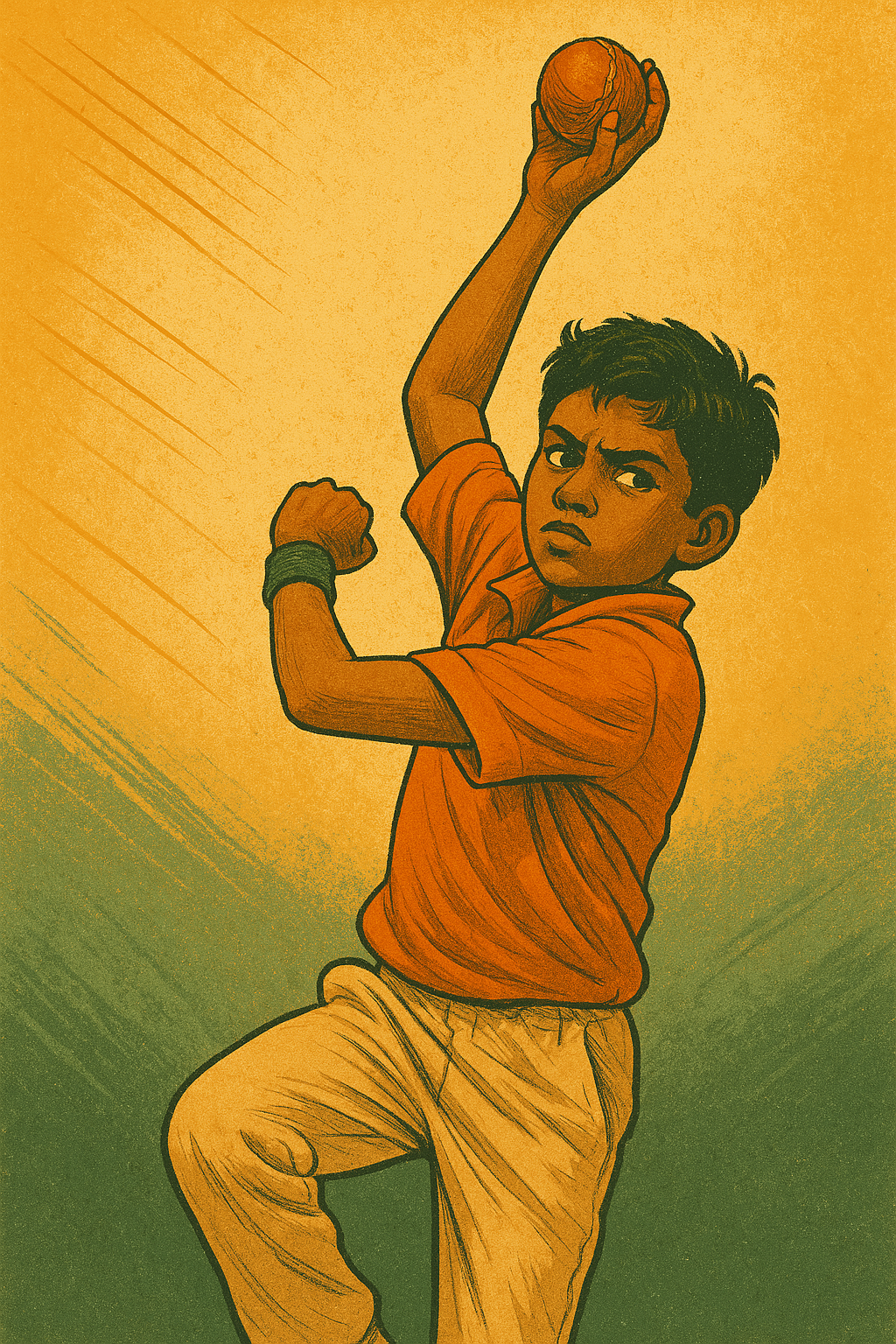The Indian Innings
Play Bold or Play Safe?

In 2047, India will celebrate 100 years of independence.
The country we inherit 22 years from now is being actively shaped by global disruptions: artificial intelligence, climate change, rapid urbanization, demographic trends and geopolitical shifts. We have a choice: React to these disruptors – or lead the way in shaping them.
In a rapidly ageing global north driven economy, young countries like India with majority populations under 30 are uniquely positioned to harness the potential of youth, drive new innovations and lead the future. 759 million people in India are under the age of 30 – that is more than the total population of the European Union and Oceania combined. By 2047, this dynamic pool of young Indians will be leading industries, policymaking, and global negotiations.
Yet, young Indians remain largely absent from key-decision making spaces. The question is not just whether India will deliver on its ambitions to be a $USD 30 trillion developed economy by 2047. It is equally whether young Indians will be co-leaders of this future.
Our Future, Our Move

Our Future India represents a dream, a roadmap to reach there and a vision of what happens when we work together to realise our common future.
For centuries, the global order has been set by a select set of players dominated by countries from the global north. This order is increasingly under scrutiny with calls to have equitable representation from the Global South.
Global South countries represent over 6 billion people, the majority of the world. India’s leadership and desire to strengthen the position of the Global South is well established. From the momentum and steering of its 2023 G20 Presidency to setting up and hosting the Voice of the Global South Summits, India is keen to establish itself as a leader that leaves no one behind.
But this world that we are endeavouring to shape is in an era of rapid transformation. Five disruptors will define the next 25 years and more—for India and the world.
1. Artificial Intelligence: Who Controls the Future of Work?
AI is rewriting the global economy. By 2030, it will add USD 15.7 trillion to the world economy – more than the current output of India and China combined. But AI is also erasing traditional jobs and transforming the way work happens at an unprecedented pace. 300 million jobs worldwide could be affected by AI-driven automation with the World Economic Forum highlighting that 39% of current job skills are expected to be outdated by 2030. The question is: Will India lead AI Innovation or will its workforce be left behind?

2. Climate Change: The Cost of Inaction
In 2023, the world recorded the highest number of billion-dollar climate disasters, with over 399 reported disasters causing economic losses exceeding USD 202 billion. Rising seal levels, heatwaves and extreme weather threaten to displace 45 million Indians by 2050. The world cannot meet its climate targets without the leadership of countries like India. No one is more invested in building a better future than young people will inherit it. The question is: Will young people drive the next decades of climate action or will they be forced to live on a dead planet?

3. Rapid Urbanization: Cities Reach a Breaking Point
By 2050, 68% of the global population will live in cities. Asia and Africa will see the sharpest rise and shift from rural to urban dwelling. But can our cities withstand this shift? Consider the Indian case: 6 of the 10 most polluted cities in the world are in India with urban inequality pushing millions of people into urban slums and a looming water crisis. Can Delhi really afford to ignore its air problem as its people choke in 1591 AQI? Can Bangalore escape its water crisis with short-term stop gap measures? Will Mumbai survive rising sea levels? Redefining how we plan our cities will define how we live, and the very fabric of our homes.

4. Demographic Shifts: Ageing World, Young India
In an ageing world, India remains young. The potential: with over 52% of its 1.4 billion population under the age of 30, India has a workforce larger than the combined populations of the European Union and Oceania combined. The risk: demographic boom without educational and economic opportunities leads to instability. India must create 90 million new jobs by 2030 to absorb its workforce. Will Indians power the global economy, or will they struggle to make ends meet?

5. Geopolitical Shifts: A world in Flux
A new order is emerging with the global north increasingly moving away from multilateral principles, and an eager global south, led by young countries, paving the way for new energy and innovation. India is at the center of these shifts – as the world’s largest democracy, a rising economic force, a coalition builder between the north and the south. But are we creating enough space for 759 million of us to shape this new order? Do young Indians have a seat at the global table?

What India does in these circumstances and with these disruptions matters for the world. We are a giant, in size and population, and the impact we collectively generate is immense. There are strong ambitions emerging from the country to accelerate growth and emerge as a USD 30 trillion developed economy by 2047. At the heart of these accelerations needs to be a focus on harnessing the potential of India’s youth and their ability to turn global disruptions into opportunities for transformation and growth. The future needs to be designed by and for a young India.

Our Future India: The Road Ahead
The Next Generation India Fellows are uniquely positioned to drive Our Future India. These dynamic, under-30 leaders bring expertise from diverse fields, reflecting aspirations of a young and ambitious nation. But how will they shape the future?
With Our Future India:
- The report will capture young people’s perspectives on global disruptions through consultations in seven Indian cities: Delhi, Varanasi, Silchar, Sanand, Puri, Kochi, Bangalore.
- Diaspora dialogues connecting young Indians worldwide and gathering insights to inform India’s future trajectory.
- It will be informed by a nationwide Future Visions of India design challenge and intergenerational survey, capturing national and global conversations through the Engine Room for the Future.
- Youth-led storytelling will bring together intergenerational voices in a campaign film and a dynamic comic strip narrating the report key findings.
The world is changing fast, and India is at the center of this transformation. But the future cannot be designed without young voices at the table.
By elevating the voices of young Indians – the largest youth population in the world – Our Future India strengthens intergenerational dialogue, fosters policy innovation, and ensures young leaders are shaping the future of global cooperation.
By 2047, we don’t just want to imagine a better India – we want to have built it.

